Types of Quality Control Tools
Conducting Quality Control (QC) ensures the quality of the items companies provide to their recipients. And in order to perform the process, Quality Control Tools are much needed. They help form the basis of an efficient business that minimizes waste and operates at high levels of productivity. Continue scrolling to learn more about the tools!
1. Measuring Tape + Ruler
Used to measure heights, depths, diameters, etc. One of the checks done using the tool will be a power line cord length check.
The engineers will measure the length of the cord to ensure that it is of a suitable length. An example will be running 2 sample tests. Ultimately, measuring up to a satisfactory length of 124cm.
2. 3M tape
3M tapes are used to permanently bond and seal materials together. Used to increase productivity, and durability, and improve appearance. Moreover, it is stronger than any other adhesive tape.
Hence, a tape check will be done on painting/electroplating by 3M 600#. Usually with about 2 sample references to reach a result of satisfactory.
3. Digital camera
Digital cameras are extremely important to take quality and clear pictures of the defects or problems that occur. The team will be able to discuss the problems through the images provided and ensure that all products are polished.
4. Weighing Scale
Measurements of mass can be provided in grams, kilograms, pounds, etc. Engineers make use of scales to measure the weight of the product. To ensure the correct measurements and weight of each product.
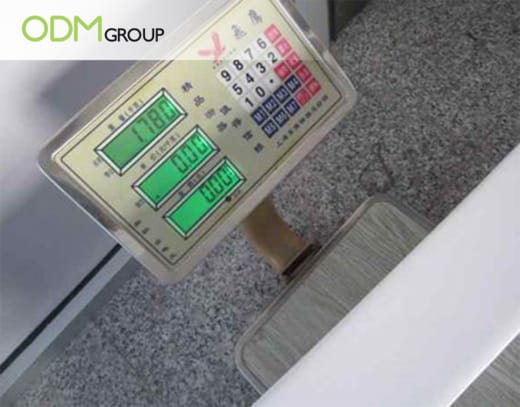
5. Calculator
The calculator is one of the most basic quality control tools. They can help to store the values and numbers keyed in by the user during checking. An example will be during Carton checking, tallying up the correct quantity in each carton box.
6. Arrow Sticker
Placed to show the defective and non-conformity positions. Allows a clearer and closer picture of the defects and issues.
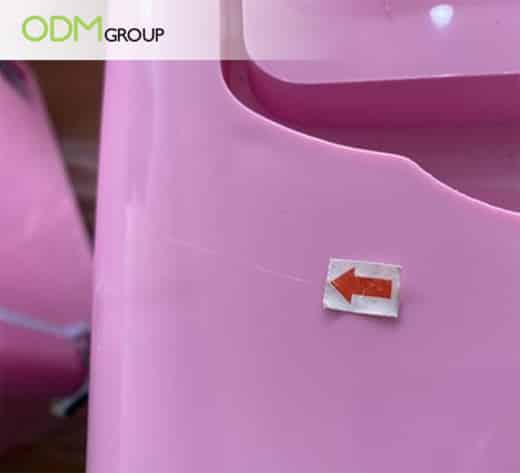
7. Barcode Scanner
An optical scanner is used to read printed barcodes. Clients will request to have QR or barcodes printed on the products, thus these quality control tools help to check the functionality and workability of the codes.
Bar code readability checking will be done plenty of times. Usually, about 20 samples reach the result of satisfaction.
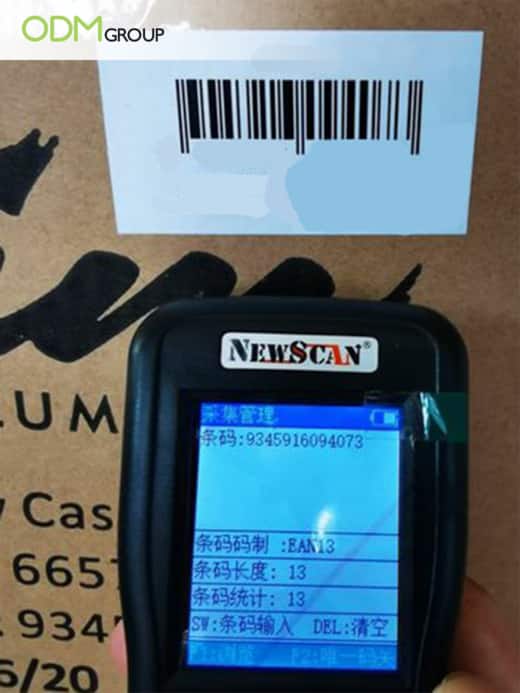
8. Hi-Pot Tester
Quality control tools are used to determine the adequacy of electrical insulation for the normally occurring over-voltage transient. A high-voltage test is done to ensure that the insulation is not marginal.
A Hi Voltage on accessible parts is done on full samples to attain the results of “No breakdown”. Usually, the specifications for the test will be 3,000V, 1 second, 0.04mA. However, it will always depend on the product you are testing.
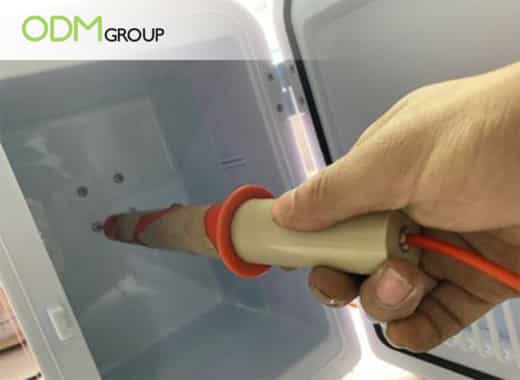
9. Power Consumption Tester
A power consumption test was conducted to figure out each device’s watts usage during a certain period of time. Thus, three 40W samples were tested to ensure the safety and sufficiency of the product. An example of a safe range for certain products will be 42.4-42.7 watts
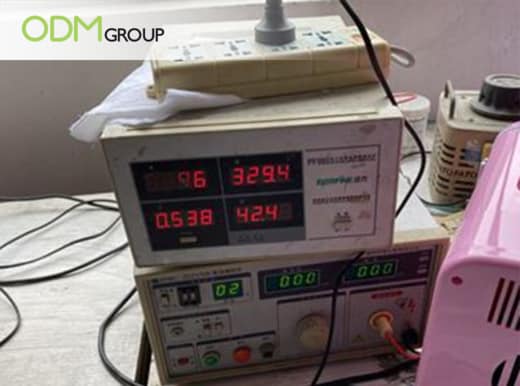
10. Multimeter Moisture Tester
A meter is used to measure the amount of water within a metal sample. Able to access materials such as wood, concrete, drywall, paper, etc. Allows the user to check for appropriate moisture levels or any adjustments needed to improve readings.
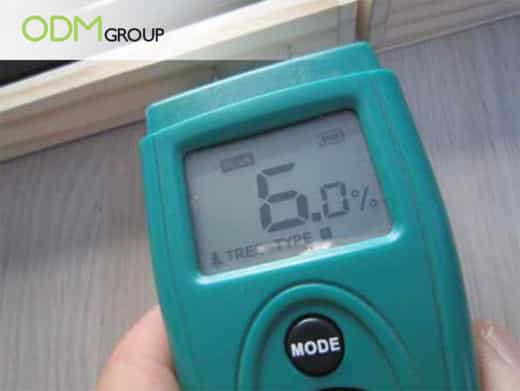
11. Pantone Swatching
Customized colours selected by clients are the norm. The requested pre-production liquid and final product colours are cross-checked. Hence, the quality control Pantone test ensures correctly produced shades and colours.
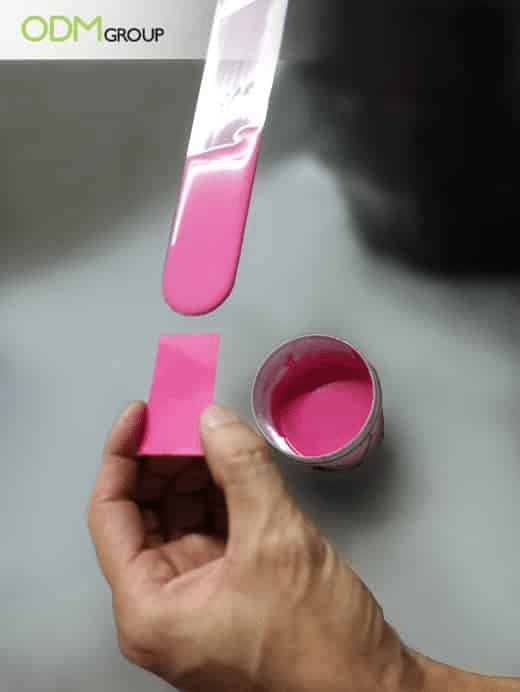
12. Electronic Thermometer
This tool will be able to detect temperature changes with processes such as electrical resistance changes. One of the tests conducted using an electronic thermometer will be Temperature checking.
An example will be testing 3 product samples to ensure a satisfactory result. Do take note of the temperature readings of both the heating and cooling processes. The range of temperatures is written down as such: Heating: about 47.6 – 48.4℃ and Cooling: about 22.5 – 23.1℃.
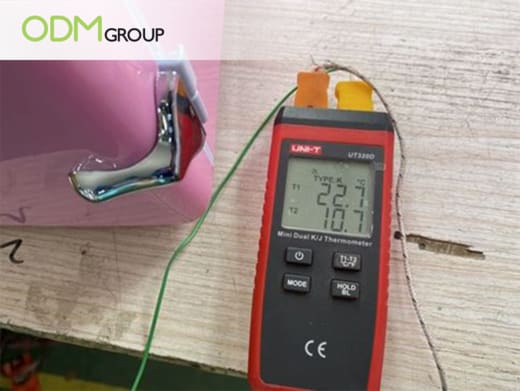
13. Power On Test
Not a tool but an extremely important test, especially for electronic products. The product is set to “Power On” to test its reliability. It will then run for about 2-3 hours until the engineers find it satisfactory. Usually, executed on multiple samples to test their functionality and workability.
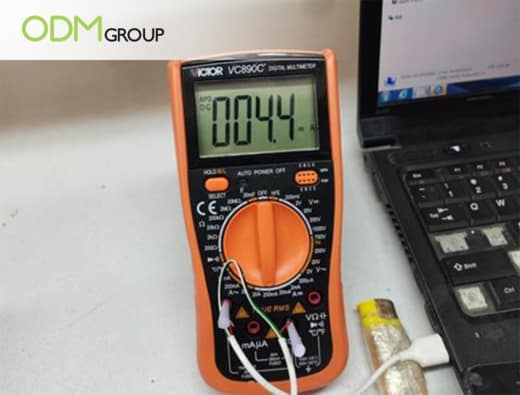
14. Transportation Drop Test
Essentially, some tests do not require any quality control tools. Transportation Drop Test is conducted to allow packages to be optimized as per real transportation conditions. A drop test executed against the “ISTA” standard – 国际安全运输协会. For example, you can drop them from a height of about 61cm. The benefit of this test will be to save costs and avoid losses during real-life transportation.
15. Soft Cloth
With standards for evaluating paints and coating, soft cloths are used mainly for rubbing checks on product paints or electroplating. The aim is to remove any traces of rust, chip-off paint, or dirt. Considered satisfactory once there are no residues that fall off the surface.
16. Vernier Caliper
A widely used linear measurement instrument with the least count of 0.02 mm. Used to measure linear dimensions like length, diameter, and depth.
17. Micrometer
Used to check the external diameter of a circle by the means of accuracy up to 0.001 mm. Also known as an Outside Micrometer or External Micrometer.
What are the Exceptions?
As a quality control party, it is different from being part of the laboratory. Thus, crack detection tests, etc are not conducted by QC parties.
Moreover, high-precision measurement instruments such as height gauges are not used during quality control as well. They are complex instruments used for detection and reverse engineering to guarantee manufacturing accuracy in modern industries. Take a read on some of the tests and tools not used in Quality Control:
Tests
Corrosion Test
Determines the resistance of materials to corrosion under certain environmental conditions. For example, against temperature, humidity, or saltwater. It helps ensure the performance of metals, platings, and coatings.
Crack Detection
The process of detecting the crack in the structures using any of the processing techniques. Two ways of crack detection: Destructive Testing and Non-Destructive testing.
Creep Test
Applying constant stress at a constant temperature often by suspending weight from it. The results can be seen on a recorded graph of strain versus time.
Fatigue Test
Conducted by measuring the force put onto the sample over numerous cycles. Test with a fatigue test machine until the sample fails.
Tools
Vernier Height Gauge
The vernier height gauge is used to measure vertical dimensions from the reference ground. Consisting of a graduated scale or bar held in a vertical position by a finely ground fixed base.
Vernier Depth Gauge
Used to measure the depth from the surface of the reference of an object. There is a depth bar that can not be used as the standard measurement.
Radius Gauge
An instrument is used to measure the radius of the object. Combined with another gauge, fillet gauge, known as the rounding part design in mechanics.
Contact ODM!
At ODM, we not only specialize in custom promotional product ideas and manufacturing high-quality products, but we also provide our expertise on informed choices and processes. If you’re looking to market a product or require help in quality control services, be sure to contact ODM for our expertise! Moreover, you can check out our sister website MindSparkz to learn more about product design!





